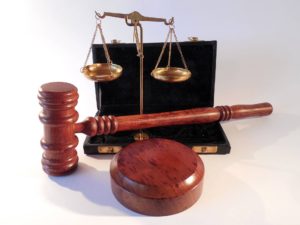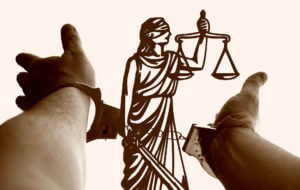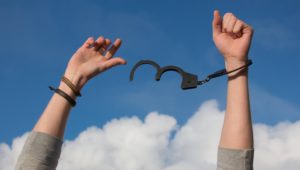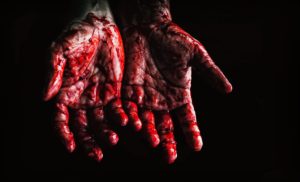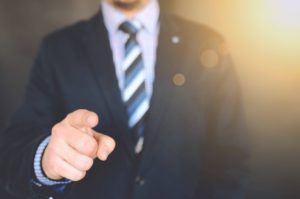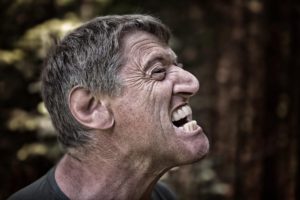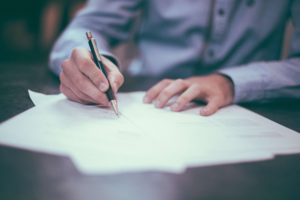Although we have discussed the different types of evidence that attorneys can present in the courtroom, we have not examined the rules that govern the evidence used in the courtroom in the State of California. Anyone facing criminal charges in California needs to understand these rules.
In a criminal trial involving a penal code violation against another person, or a vehicle code violation, such as driving under the influence, prosecutors need evidence in order to obtain a conviction.
Cornell Law School defines the rules of evidence as follows:
The “rules of evidence” are, as the name indicates, the rules by which a court determines the evidence that is admissible in a trial. In the United States, federal courts follow the Federal Rules of Evidence, while state courts generally follow their own state rules. …
In establishing what evidence is admissible, many rules of evidence concentrate first on whether the offered evidence is relevant.
The Federal Rules of Evidence also address the admissibility of hearsay, oral testimony, as well as Article V of the Federal Rules of Evidence and Division Eight of the California Evidence Code.
The State of California recognizes a number of Evidence Rules that determine how attorneys may present and use evidence during a case
- The rule that all evidence introduced at trial must be relevant and have foundation
- “Relevant evidence” means evidence, including evidence relevant to the credibility of a witness or hearsay declarant, having any tendency within reason to prove or disprove any disputed fact that is of consequence to the determination of the action.
- “Foundation“ means the basis on which something is supported — particularly evidence or testimony that establishes the admissibility of other evidence
- “Witness Rules” concern those who can qualify and serve as witnesses
- Except as otherwise provided by statute, every person, regardless of age, is qualified to be a witness
- “Rules and regulations” determine the procedures used by attorneys to interrogate witnesses
- A specific set of courtroom guidelines determines the specific attorney that can ask questions, the questions that he or she can ask, and the order in which he or she can ask them.
- The hearsay evidence rules
- These rules concern evidence of a statement that is made by a person other than a witness while testifying at the hearing, and that is offered to prove the truth of the matter stated
- The rule against character evidence in California trials
- These rules state that evidence of a person’s character, or of traits of his or her character, is inadmissible when offered to prove his or her conduct on a specified occasion
- California evidentiary privileges
- These rules give a witness the option not to disclose the fact asked for, even though it might be relevant to the case; the right to prevent disclosure of certain information in court, especially when the information was originally communicated on a professional or confidential basis
- The rule against evidence that may create undue prejudice, confuse the issues, or mislead the jury
- These rules state that the court, at its discretion, may exclude evidence if its probative value is substantially outweighed by the probability that its admission will (a) necessitate undue consumption of time or (b) create the substantial danger of undue prejudice, of confusing the issues, or of misleading the jury
Courtroom Process and Evidence Rules in California
In the courtroom, the government possesses a grossly disproportionate amount of power in comparison to that of the accused individual. The founding fathers understood this vast difference and knew that, in order to moderate the amount of power held by the government, they needed to establish rules.
A criminal case has two sides, the prosecution and the defense. The prosecution represents the government as well as the and people of the state in which the offense occurred. On the other side of the courtroom, the defense represents the accused individual and fights to preserve civil liberties under the Constitution of the United States.
If either side violates any of California’s rules of evidence during a criminal trial, then one of the attorneys may have the evidence in question excluded by objecting to it. If the judge does not strike the evidence, the defense may appeal the California criminal conviction. The appeal can be made because the prosecution improperly admitted the evidence, and the judge allowed this to happen.
In a criminal case, knowledge is power. Accused individuals deserve the right to empower themselves as much as possible in order to maximize the opportunities for success in their case. By understanding more about evidence rules in California, people can gain knowledge and power in the courtroom.
Defining California Evidence Rules on Relevance and Foundation
Some of the simplest California evidence rules state that both sides may only present evidence that meets the following criteria:
- The evidence has direct relevance to the issues brought up in the case, under Evidence Code 210
- The evidence has what the State of California defines as “foundation”. Foundation means that the side introducing the evidence (called the “proponent” of the evidence) must provide some proof of the reliability of the evidence under Evidence Code 1400
Evidence Code 210 defines “relevant” evidence as evidence that has any reasonable tendency to prove or disprove any of the following:
- A disputed fact in the case
- Matters that can determine the outcome of the case
Foundation can become a complicated subject. The kind of foundation that works to establish that certain evidence serves as trustworthy varies with the type of evidence.
Example of Relevance
Ryan and his girlfriend Kelly began dating a few months ago. Kelly’s baby would always scream and cry whenever Kelly would leave the room. Ryan began to hit the baby until it would stop crying and screaming. One day, the baby died from the abuse.
Prosecutors charged Ryan under Penal Code 187 ,”Murder”, for beating his girlfriend’s child to death.
Ryan’s defense attorneys argued that the child actually died of injuries sustained by falling down a flight of stairs. The prosecution introduced witnesses who testified that Ryan had a history of hitting the child.
The court considered the testimony of these witnesses as relevant evidence. It affected the outcome of the case because it tended to show that Ryan demonstrated a pattern of violent behavior toward the child. Consequently, the evidence made it more believable that Ryan killed the child by beating her.
Example of Foundation
The police have put Pam on trial under Penal Code 487 Grand Theft for stealing a painting from a museum. Law enforcement found the painting in the possession of an art dealer who claims he purchased it from Pam.
The prosecution introduces the actual painting as evidence. In order to establish a “foundation” for this evidence, the prosecution brings in a museum employee to testify that the painting shown in court is actually the one that was stolen from the museum.
The employee essentially identifies the painting as the one that someone stole. The employee does not need to answer any questions about the theft itself, or about Pam.
Example of Foundation
Prosecutors put Charles on trial for violating California embezzlement laws. The prosecution alleges that Charles stole funds from his employer. The prosecution introduces evidence to the court, which includes a number of the company’s financial records.
In this situation, the prosecutors must establish the reliability of the financial records in order to validate them. The prosecutor establishes the records’ reliability through the owner’s testimony. The prosecutor asks the owner of the company to testify that the records in question are actually the company’s records, and that the records are accurate.
Defining California’s Evidence Rules Regarding Witnesses
The testimony of witnesses serves as direct evidence. The legal landscape considers witnesses an integral form of evidence in California criminal trials. In order to maintain the integrity of witness testimony, California lawmakers developed a few evidence rules for witnesses in the courtroom. Consequently, witness testimony is governed by several important evidence rules in California.
Witness Competence Under California Evidence Code 701
California Evidence Code 701 states that a person may not serve as a witness in a California criminal trial unless he or she can
- Express himself or herself so the jury can understand the witness
- Understand his or her duty as a witness to tell the truth
Example
Toby is charged with murder under California Penal Code 187 for a gang-related homicide.
Prosecutors in the case bring forth a witness named Stanley. Stanley was a criminal associate of Toby. However, Stanley has severe scar tissue built up on his face and jaw as the result of his participation in many fights throughout his life. Consequently, his speech pattern seems more like a mumble than actual speech.
The defense asserts that Stanley cannot serve as a competent witness per California Evidence Code 701 because he cannot express himself clearly and intelligibly..
Lay Witnesses Under California Evidence Code 800
Under California evidence rules, a witness must qualify to testify about the matter on which he or she has been called to testify.
In most instances, the courtroom uses “lay witnesses”. Under Evidence Code 702, “lay witnesses” are:persons having personal knowledge of the matter in question.
Lay witnesses usually testify only about facts. If a lay witness states an opinion on something in the case, that opinion cannot be admitted as evidence. However, it can become admissible if legal counsel can assert that the witness;s opinion meets the following criteria:
- The witness rationally bases his or her opinion on the perceptions of the situation
- The opinion becomes helpful in clarifying understanding of his or her testimony in the case
Example
Michael is charged with murder under Penal Code 187 and prosecutors bring him to court.
David saw the event happen and the prosecutors call upon him to testify concerning what he saw. David can only testify concerning what he actually witnessed. His personal feelings about the situation cannot be admitted as evidence.
Expert Witnesses
In addition to lay witnesses, lawyers in a California criminal trial often rely on “expert witnesses” to testify. The courts define expert witnesses as persons with special knowledge, skills, experience, or education that enables them to offer their opinion on matters related to the case under California Evidence Code 720.
California Evidence Code 801 allows expert witnesses to offer their opinions. However, the court limits these opinions to subjects that would ordinarily be beyond the experience of most jury members with an adequate amount of knowledge. The expert opinion must serve to further the understanding of the jury members.
Example
Prosecutors have charged Kelly for killing her husband under Penal Code 192(a) “Voluntary Manslaughter.” Kelly and her criminal defense attorney choose to assert the legal defense of “self-defense” in the case.
Kelly’s self-defense plea rests in part on the argument that she feared her abusive husband, and that she suffered from the psychological condition known as “battered woman’s syndrome”.
Since most jurors probably do not accurately understand the scientific basis of battered woman’s syndrome, Kelly and her attorney use a psychologist as an expert witness to accurately describe this syndrome. The psychologist also testifies that, in his opinion, he believes Kelly suffered from battered woman’s syndrome.
The Process of Examining Witnesses
California Evidence Code 772 states that the attorneys on both sides of the case must examine the witnesses in a criminal jury trial in a particular order under California state law.
- Evidence Code 760 states that the lawyer who calls each witness may ask questions first. This is known as “direct examination.”
- California Evidence Code 761 states the opposing side will then question the same witness in a “cross-examination.” The cross-examination may only involve matters that the initial lawyer asked about in the direct examination.
- Evidence Code 762 states that the first lawyer who called and initially examined the witness may examine him or her again in a “redirect examination.”
- Evidence Code 763 states that the other side can then question the witness a final time in the “recross-examination.”
With regard to the direct and redirect examination of witnesses, the lawyer may not ask what are defined as “leading questions.” Evidence code 764 states that a “leading question” is one that suggests to the witness the answer that the examining attorney wants to hear.
However, California Evidence Code 767 allows for leading questions during the cross-examination and recross-examination.
Example
Using the previous example of Kelly, the defense team calls a psychologist named Dr. Cretnist to testify about battered woman’s syndrome, as well as to offer his opinion that Kelly suffers from it.
- When Dr. Cretnist first takes the stand, Kelly’s defense lawyer questions him first during the “direct examination.”
- The prosecutor then conducts the “cross-examination” of Dr. Cretnist. The prosecutor can only ask questions relating to the defense attorney’s questions posed during the direct examination.
- After this second round of questioning, Kelly’s lawyer takes over once again during the redirect examination.
- Finally, the prosecutor has the opportunity to question Dr. Cretnist a final time during the recross-examination.
Example
In his direct examination of Dr. Cretnist, Kelly’s defense attorney asks,
“So, you believe that Kelly suffers from battered woman’s syndrome?”
The law considers this a leading question, and the prosecutor objects.
Kelly’s defense lawyer must rephrase the question as,
“Do you believe Kelly suffers from battered woman’s syndrome?”
Then, on cross-examination, the prosecutor asks Dr. Cretnist,
“It sounds as if Kelly does not display some of the classic symptoms of battered woman’s syndrome. Is that correct?”
This is a leading question. However, the law allows it because the attorney asked it during the direct examination.
The Impeachment of Witnesses
One side will often challenge the credibility of the witnesses from the other side during a California criminal trial. California Evidence code 780 defines this concept as the “impeachment of witnesses”. However, specific California evidence rules determine how this may be done.
The factors that can be used to impeach a witness include the following:
- The demeanor of the witness while testifying
- The capacity of the witness to perceive or recollect what he or she is testifying about
- The trait of honesty or dishonesty shown by the witness
- Any bias, interest, or other motive demonstrated by the witness regarding the outcome of the case
- Any prior statements made by the witness that show an inconsistency with his or her testimony.
Under California Evidence code 788, if the witness has a prior conviction for a felony, either side may use that fact to impeach the witness’s testimony.
There are, however, factors that cannot be used to impeach a witness’s credibility. These include the following:
- The witness’s religious belief or lack thereof, under California Evidence Code 789
- Any evidence regarding aspects of the witness’s character other than honesty or dishonesty, under California Evidence Code 786
Hearsay Evidence Rules in California
Hearsay evidence provides one of the most complex areas of law. Generally speaking, hearsay evidence is not admissible in court.
The rationalization behind dismissing admissibility comes from the fact that the individual did not swear an oath to tell the truth when he or she made the hearsay statement. Because the individual did not swear to tell the truth, the hearsay statement then becomes inadmissible in court.
As a general rule, California laws prohibit the use of hearsay evidence in California criminal trials under Evidence Code 1200.
California state law defines hearsay evidence as:
- Any statement not made by a witness testifying in the trial
- Any statement that a witness offers to prove
Example
Erin works part time while attending college. She was recently charged with petty theft in California. Prosecutors accuse her of shoplifting textbooks from the college bookstore which would have cost over $800 to purchase.
The prosecution calls as a witness Angela, a student who lives on Erin’s dorm floor. Angela testifies that she knows that Erin stole textbooks. As proof, Angela states that her roommate told her that she saw Erin steal the text books from the bookstore. No one ever called the roommate as a witness at Erin’s trial.
Angela’s testimony about what the roommate said becomes hearsay evidence in the courtroom and is not admissible in court.
However, the hearsay evidence rule acknowledges a litany of exceptions. In spite of California evidence code 1200, the law allows hearsay evidence if the statement meets any of the following criteria:
- Under Evidence Code 1200, an out-of-court statement not offered for the truth of its content becomes non-hearsay
- The court allows an admission of a party to the case under California Evidence Code 1220
- California Evidence Code 1230 permits a statement that works against the speaker’s self-interest
- Written statements by a witness regarding events while fresh in his or her mind at the time the witness made the statement, but that he or she has forgotten by the time of the trial under California Evidence Code 1237
- California Evidence Code 1238 permits previous eyewitness statements by a witness when the crime or other event was fresh in his or her memory
- Spontaneous statements made in the excitement of the moment become valid under California Evidence Code 1240
- California Evidence Code 1241 permits statements made to explain the speaker’s actions while he or she performed those actions
- Statements made by a dying person concerning the causes or circumstances of his or her death become admissible under California Evidence code 1242
- Certain statements about the speaker’s mental or physical state that the speaker offers to prove qualify under California Evidence code 1250 as admissible in court
- California Evidence Codes 1271 and 1280 allow certain business or public records to become admissible
- California Evidence Code 1291 permits former testimony that the speaker gave in an earlier court or official proceeding to become admissible
- Certain statements about family history, community history, or a person’s reputation in the community become admissible under California Evidence Codes 1310, 1311, 1320, and 1324
Defining the Character Evidence Rule in California
Another important concept in the California evidence rule is the “character evidence rule”. Under Evidence Code 1101 , the California character evidence rule states that “character evidence” loses admissibility in a California trial if it seeks to show that a person acted in accordance with his or her character on a particular occasion.
For a criminal defendant, this means that the prosecutor may not introduce evidence of acts committed by the accused in the past—criminal or otherwise—in order to prove that the defendant committed the crime with which the defendant is currently charged.
Although the California character evidence rule contains a long list of situations in which evidence of a person’s character cannot be used against him or her, it does not provide protection in certain situations.
California Evidence Code 1105 allows so-called “habit evidence” to become admissible to show that a defendant acted in accordance with his or her habits on a particular occasion.
California Evidence Code 1101 allows prosecutors to introduce evidence of the defendant’s past criminal actions in order to show that the accused individual had the motive, intent, or opportunity to commit the crime.
Example
California prosecutors charge Meredith with Robbery under California Penal Code 211. During her questioning by the prosecution, the prosecutor causes her to admit that in her divorce, she lost custody of her child. The prosecutor also gets her to admit that she was convicted of welfare fraud.
These issues do not pertain to Meredith’s guilt or innocence in the current case. These facts only suggest that Meredith’s character lacks in quality. The jury formulates an idea that she is a bad person due to these statements.
The judge considers this evidence to be inadmissible in the trial because it qualifies as character evidence.
Defining Evidentiary Privileges in California
Another important section of California evidence rules revolves around evidentiary privileges.
Blacks Law Dictionary describes “evidentiary privilege” as the right to
- refuse to testify in court or disclose certain information in a court case
- prevent someone else from testifying against you or disclosing certain information
Some of the most important evidentiary privileges in California include the following:
The Attorney-Client Privilege
California Evidence Codes 954 and 955 state that everything spoken between the client and the attorney may not be used during the trial. The United States Supreme Court asserted that attorney-client privilege encourages clients to make full and frank disclosures to their attorneys, thus enabling the attorney to provide candid advice and more effective representation.
The Marital Privilege
f
California Evidence Codes 940 and 970 assert the right of the defendant to not testify against his or her husband or wife, as well as the right to prevent confidential marital communications from being disclosed. Both the witness’s spouse and the defendant’s spouse hold the spousal communications privilege. Therefore, either may invoke the spousal privilege rule.
The communications privilege takes effect when two individuals marry, and an individual may invoke the rule to protect the confidential communication between individuals who have since married. California evidence code 970 allows testimonial privilege to include not testifying, as well as not being called a witness against the spouse during the trial.
The Psychotherapist-Patient Privilege
California Evidence Codes 1014 and 1015 assert the right of an individual to confide in his or her psychotherapist without the risk of incrimination. Physician-patient privilege serves as an extension of medical confidentiality. It protects communication between the patient and his or her doctor from being used against the patient in court. This privilege may involve a situation in which a patient confesses to committing a particular crime. It may also apply to injuries sustained during an incident in a civil case.
The Penitent-Clergy Privilege
California Evidence Codes 1033 and 1034 asserts the right of a member of the clergy to refuse to disclose any communication with the accused. The rule essentially prohibits legal questioning regarding any form of communication between a clergyman and a member of his or her congregation. It serves to protect freedom of religion. In the Catholic Church, for example, people must confess sins to priests. If priests were to divulge such communications, Catholics could possibly experience a disproportionate amount of criminal accusations and convictions.
Defining California Evidence Rules on Inadmissible Evidence as Prejudicial, Confusing, or Misleading
Evidence Code 352 describes and accounts for one of the most important of evidence admissibility. This law explains that the judge of the case may choose to exclude any evidence if its value becomes substantially outweighed by the likelihood that presentation of the evidence will do one of the following:
- Take up too much time at trial
- Create undue prejudice
- Confuse the issues
- Mislead the jury
Example
Phyllis accuses her professor, Charles, of Sexual Battery under California Penal Code 243.4 for groping her at a university function. After a few weeks prosecutors bring Charles to trial. During Phyllis’ testimony, she describes that her grades began to suffer after Charles Groped her.
Charles attempts to show Phyllis’ academic records to show that they did not suffer from the alleged incident, and that Phyllis lied about her claim. If Charles can show that Phyllis lied, she would then lose credibility as a witness in the case.
But the judge decides to exclude the school records under Evidence Code 352. The judge reasons that an examination of Phyllis’ academic records would take up too much of the court’s time to prove a point that is not closely related to the main issues in the case.
In this incident, the judge must conduct a balancing test between the value of the evidence, against wasting time. The judge has to decide if the evidence would prove something significant in the case. Many times circumstantial evidence causes the judge to weigh the cost to benefit comparison of the evidence in the case.
Objections to Violations of California Evidence Rules
If the prosecution at the trial introduces evidence that violates one of these California evidence rules, the defendant’s criminal defense attorney can “object” to the evidence.
After the attorney objects, the judge will do one of the following:
- “Sustain” the objection, and exclude the evidence from trial. Sustains essentially agree with the objection
- “Overrule” the objection, and allow the evidence in the trial. Overrules essentially disagree with the objection
If the objection becomes overruled and the judge admits the evidence, then the defendant may have the ability to appeal the criminal conviction on the grounds that
- The judge should have excluded the evidence
- Admitting the evidence caused a “miscarriage of justice,” as described by Evidence code 353.
In order to achieve an appeal, the criminal defense lawyer must have objected to the evidence at trial. If the defense attorney did not object at the initial trial, then the defendant may not appeal on this basis.
However, if the defense attorney failed to object but he or she should have, the accused individual may have the opportunity to challenge the conviction based on ineffective assistance of counsel
Furthermore, if the defendant feels that evidence for the case somehow became wrongly excluded at the trial, then the defendant may appeal his or her conviction under Evidence code 354. This can occur if the exclusion resulted in a miscarriage of justice, and one of the following is true in the case:
- The criminal defense attorney let the court know the substance, purpose, and relevance of the excluded evidence,
- Rulings of the court made the defense attorney unable to do so
- The evidence was sought by questions the defense attorney asked during cross-examination or recross-examination
Understanding California Evidence Rules
The California Rules of Evidence describe how evidence can affect legal proceedings. Evidence rules define what type of evidence may affect reaching a decision.
The California Rules of Evidence focus on the amount, quality, and type of proof needed to find a successful outcome during litigation.
After a case reaches the courtroom, one party must prove their case in order to persuade Court to rule in his or her favor. Evidence rules and sure that the judge and jury can trust the evidence presented in the courtroom.
Without regulation, any half truth or lie could significantly impact the outcome of the case.
California state lawmakers designed a number of rules to establish how attorneys may present and use evidence.
- The rule that all evidence introduced at trial must be relevanspoust, under California Evidence Code 210
- The rule that all evidence have “foundation,” which means that lawyers must present reliable evidence, under California Evidence Code 402
- Rules about who qualifies as competent to serve as a witness, under California Evidence Code 700 and Evidence Code 701
- Rules and procedures about how lawyers question (examine and cross-examine) witnesses, under California Evidence Code 760 and Evidence Code 761
- The hearsay evidence rule, under California Evidence Code 1200
- The rule against character evidence in California trials, under Evidence Code 1101
- California evidentiary privileges as defined by California State Laws
- The rule against evidence that may create undue prejudice, confuse the issues, or mislead the jury, under California Evidence Code 352
Criminal Cases can cause immense stress and challenges for anyone accused of committing criminal offenses. Furthermore, any situation involving the government exemplifies the striking imbalance of power between the two parties.
Criminal defense attorneys allow accused individuals an opportunity to find the best outcome in a case in a few ways.
Defense lawyers know about the courtroom process, and can effectively guide the accused person through the challenges he or she faces. But more importantly, Defense attorneys have the time and resources available to investigate the situation and build a strong case. Lawyers empower accused individuals in the legal landscape and lead the defendant down the most effective path.
People have an obligation to themselves to become as prepared as possible during any criminal allegation. Learning about how the courtroom function allows for the highest opportunity for success in the legal landscape.
If people can more accurately understand how lawyers can use and manipulate evidence, then they can substantially increase the likelihood of a successful outcome in their case.


